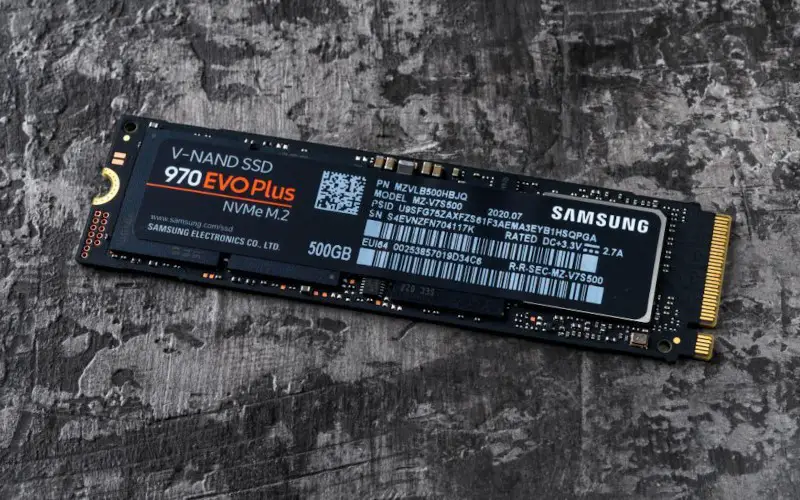There are many factors to consider when purchasing a new computer, but two of the most important are the type of storage and the processor. This article will compare the eMMC vs. NVMe SSD storage options.
What is eMMC Storage?
The Embedded MultiMediaCard, or eMMC, is an internal data storage card. It is built using flash storage, a type of non-volatile memory that can retain data even when there is no power supply.
eMMC cards are much smaller than traditional hard drives and are also much cheaper. This makes them a popular choice for data storage in portable devices such as smartphones, tablets, cameras, and laptops. eMMC cards typically have a capacity of 4GB to 64GB.
They use a controller chip to manage the data storage and retrieval process, and they connect to the device via a special interface called the Universal Flash Storage (UFS) interface.
Related: eMMC or SSD: Which is Better?
How Fast is eMMC Storage?
eMMC storage is becoming increasingly popular in enterprise applications due to its high transfer speeds and reliability. The 5.1 eMMC storage standard delivers transfer speeds of up to 400MB/s, equivalent to the highest transfer speeds of SATA SSDs.
Each new generation of eMMC has seen a performance improvement, making it a more viable option for enterprise applications. In addition, eMMC is more resistant to data corruption and is less likely to fail than other types of storage.
As a result, eMMC is a great choice for enterprise applications that require high performance and reliability.
What is NVMe Storage?
NVMe is an abbreviation for Non-Volatile Memory Express and refers to a new protocol for communication between computers and solid state drives (SSDs). This technology was designed to take advantage of newer SSDs much faster than traditional hard drives.
The main benefit of NVMe over other protocols is the reduced latency which results in higher input/output operations per second (IOPS). NVMe uses a PCI Express (PCIe) bus to connect to flash storage, which allows for tens of thousands of parallel command queues.
This makes NVMe-based PCIe SSDs ideal for applications that require quick data access, such as video editing, gaming, and data analytics. In addition, NVMe drives are often more reliable than other storage types due to their lack of moving parts.
These improved performance characteristics make NVMe-based SSDs well-suited for use in demanding applications such as high-performance computing, video editing, and 3D rendering.
How Fast is NVMe Storage?
Regarding storage speed, NVMe drives are in a class of their own. They can usually deliver a sustained read-write speed of 3.5 GB/s, which is more than six times faster than the best SATA SSDs.
NVMe drives are ideal for gaming or high-resolution video editing, where every second counts. NVMe drives are also more energy-efficient than their SATA counterparts, so that they won’t put as much strain on your battery. NVMe is the way to go if you need the fastest storage speed.
eMMC vs NVMe SSD: Which is Better?
If you’re looking for speed, then NVMe is a clear choice. It’s the latest and greatest solid-state drive technology, offering a significant speed boost over older eMMC drives.
That’s because NVMe uses a PCIe connection much faster than the older SATA standard. Not only that, but NVMe drives also have a larger capacity, meaning they can store more data. This is perfect for large files such as open-world video games.
However, eMMC drives are still found in many cheaper devices, such as phones and digital cameras. So if you’re on a budget, eMMC might be your better choice.
Conclusion
Choosing between an eMMC vs NVMe SSD storage option can be difficult, but we hope this article has helped you decide. If you need high performance and reliability in your enterprise applications, then eMMC is the better choice.
If you’re looking for speed and larger capacity, then NVMe is the way to go. Whichever option you choose, remember that both SSD storages offer better performance than traditional hard drives.







